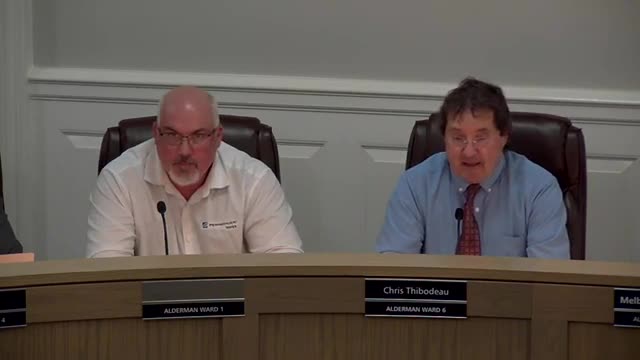Water contamination crisis raises alarm over PFAS and turbidity
July 19, 2024 | Nashua Board of Aldermen, Nashua, Hillsborough County, New Hampshire

This article was created by AI summarizing key points discussed. AI makes mistakes, so for full details and context, please refer to the video of the full meeting. Please report any errors so we can fix them. Report an error »

In a recent government meeting, officials discussed the pervasive issue of PFAS (per- and polyfluoroalkyl substances) contamination in local water sources, highlighting the challenges of pinpointing specific sources of these chemicals. A representative from the New Hampshire Department of Environmental Services (DES) noted that PFAS levels are being detected in various locations, including private wells, with some areas showing contamination levels at 4 parts per trillion, which is significant under federal regulations.
The discussion revealed that PFAS are commonly found in everyday products such as carpets, flame retardants, and nonstick containers. Despite the widespread presence of these substances, officials expressed relief that their current water treatment systems are in compliance with regulations. They emphasized the importance of maintaining this compliance as they navigate the complexities of water quality management.
The meeting also touched on the topic of turbidity, defined as the cloudiness of water, which is used as a measure of water clarity and treatment effectiveness. Officials explained that while turbidity is relatively easy to treat, it does not indicate the specific contaminants present in the water.
Additionally, the issue of microplastics was raised, with officials acknowledging that they have not yet conducted analyses for these contaminants. They noted that current regulations do not require monitoring for microplastics, but they are keeping abreast of emerging discussions and potential future regulations on this topic.
Overall, the meeting underscored the ongoing challenges faced by local authorities in managing water quality and the need for continued vigilance in addressing both PFAS and emerging contaminants.
The discussion revealed that PFAS are commonly found in everyday products such as carpets, flame retardants, and nonstick containers. Despite the widespread presence of these substances, officials expressed relief that their current water treatment systems are in compliance with regulations. They emphasized the importance of maintaining this compliance as they navigate the complexities of water quality management.
The meeting also touched on the topic of turbidity, defined as the cloudiness of water, which is used as a measure of water clarity and treatment effectiveness. Officials explained that while turbidity is relatively easy to treat, it does not indicate the specific contaminants present in the water.
Additionally, the issue of microplastics was raised, with officials acknowledging that they have not yet conducted analyses for these contaminants. They noted that current regulations do not require monitoring for microplastics, but they are keeping abreast of emerging discussions and potential future regulations on this topic.
Overall, the meeting underscored the ongoing challenges faced by local authorities in managing water quality and the need for continued vigilance in addressing both PFAS and emerging contaminants.
View full meeting
This article is based on a recent meeting—watch the full video and explore the complete transcript for deeper insights into the discussion.
View full meeting
